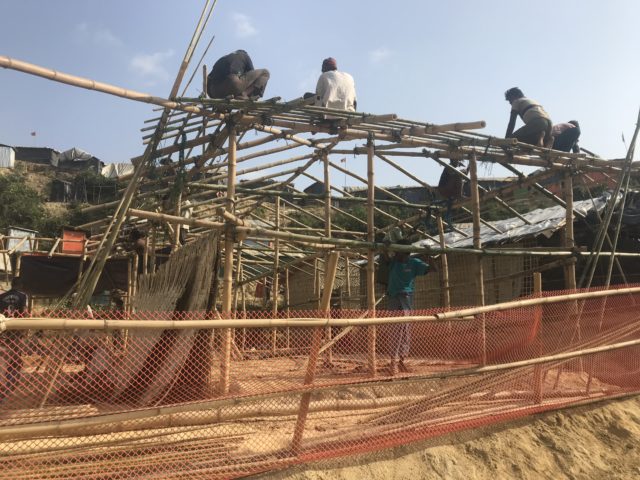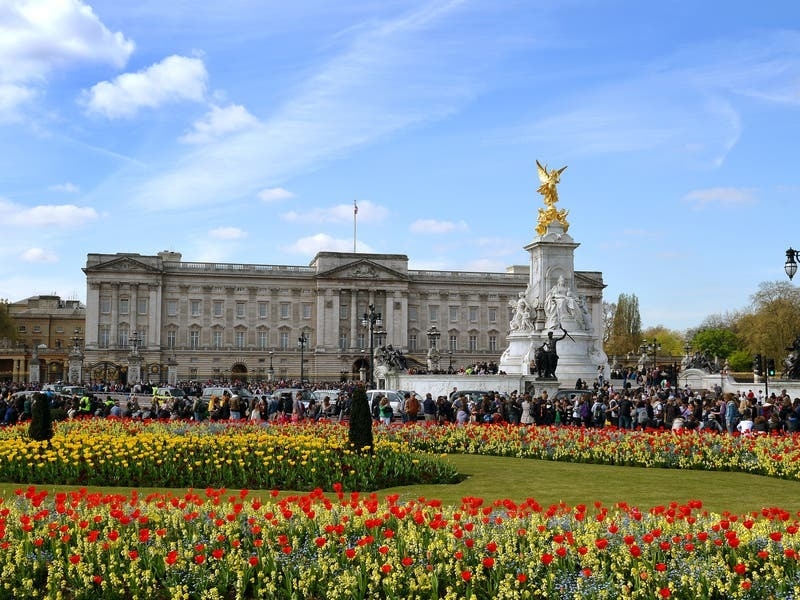It is relentlessly hot, dusty, humid, and so far mainly dry, but the rains are coming.
As preparation work steps up ahead of the monsoons, the Rohingya refugee camps in southern Bangladesh have been transformed into large-scale construction sites, a hive of activity in the face of the unknown.

Intricate bamboo bridges stretch across low-lying water, and work is ongoing to make prefabricated replacements in case the storms damage those standing.
Trucks carrying huge sticks of bamboo wait on the outskirts of the settlements, and Rohingya continue to pave access roads with thousands of bricks as the sun bears down.
Some images from the camps in Cox’s Bazar, Bangladesh, where I have spent the past two days. Hundreds of thousands of #Rohingya are living in the sprawling refugee settlement. Lots of construction work ongoing to prepare for the monsoon season @decappeal @BritishRedCross pic.twitter.com/QzTYmhaV3t
— Jemma Crew (@jemmacrew) April 24, 2018
The fear is patent, with the pre-monsoon rains having already created chaos, but people are keeping busy, and everywhere little pockets of entrepreneurship are blooming.
Within seven months hundreds of shops selling everything from fizzy drinks to flip flops have have sprung up in Balukhali, flanking the roads leading to the heart of the camps.
Here, mid-way up a steep hillside, we find a 50-year-old farmer.
Farmer Mohammad Jamir didn’t have time to grab much when he fled Myanmar with his family, but he brought with him his precious seeds. He is really proud of his makeshift garden and hopes to grow other types of vegetables soon #Bangladesh #NationalGardeningWeek pic.twitter.com/2myE57G4Qf
— Teresa Goncalves (@TreGoncalves) April 30, 2018
Mohammad Jamir, who grabbed a handful of his precious seeds as he fled his farm in Burma, is now carefully nurturing little lau fruits on the roof of his shack.
He hopes to make enough to sell in the future, but for now is content with feeding his family – the vegetable is a welcome addition to the basic rice, pulses and onions rationed out.
Others are also cultivating rooftop gardens, some growing pumpkin, all hoping to make enough to support their families.
Mohammed Sayed, who was a barber in Burma, has continued cutting hair in the camps after arriving six months ago.

His equipment is basic – scissors, comb, a plastic bottle filled with water to dampen hair and an old broken mirror – but he says it gives him respite from the pressures of camp life.
Children are particularly inventive, forced to find new ways to overcome boredom in a place where toys are scarce.
They play hide and seek inside huge steel pipes lying on the roadside which will be put in the ground to help improve drainage ahead of the heavy rains.
During the storm in Cox’s Bazar last night – a 1.5hr drive from the camps – windows were rattling and the thunder kept us awake. It’s the second storm in four days. This is the type of building the #Rohingya have to protect them. (Note the sandbags to weigh down the roof) pic.twitter.com/jZcnrR38wU
— Jemma Crew (@jemmacrew) April 27, 2018
A child plays with an empty plastic bottle, another spends an hour examining my notepad and pen, while a piece of netting has been strung up to create a miniature volleyball court.
All are fascinated by the cameras, tripods and faces that appear from time to time, documenting their continued displacement.
Some of the lucky ones can go to learning centres or child-friendly spaces; the chanting of Arabic pours out of a darkened room, while others learn English nursery rhymes and draw pictures.
Many hang around the sides of the roads, calling out hellos and goodbyes at foreigners, or help their families with chores, bamboo balanced across their small backs.
It’s a frenzy of activity, behind which lies the unanswered question: what next?






